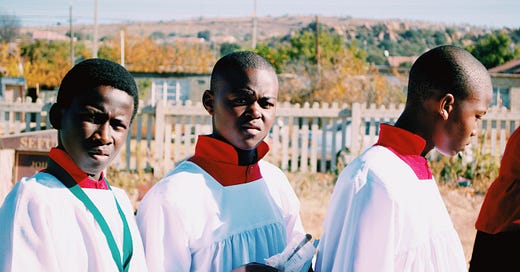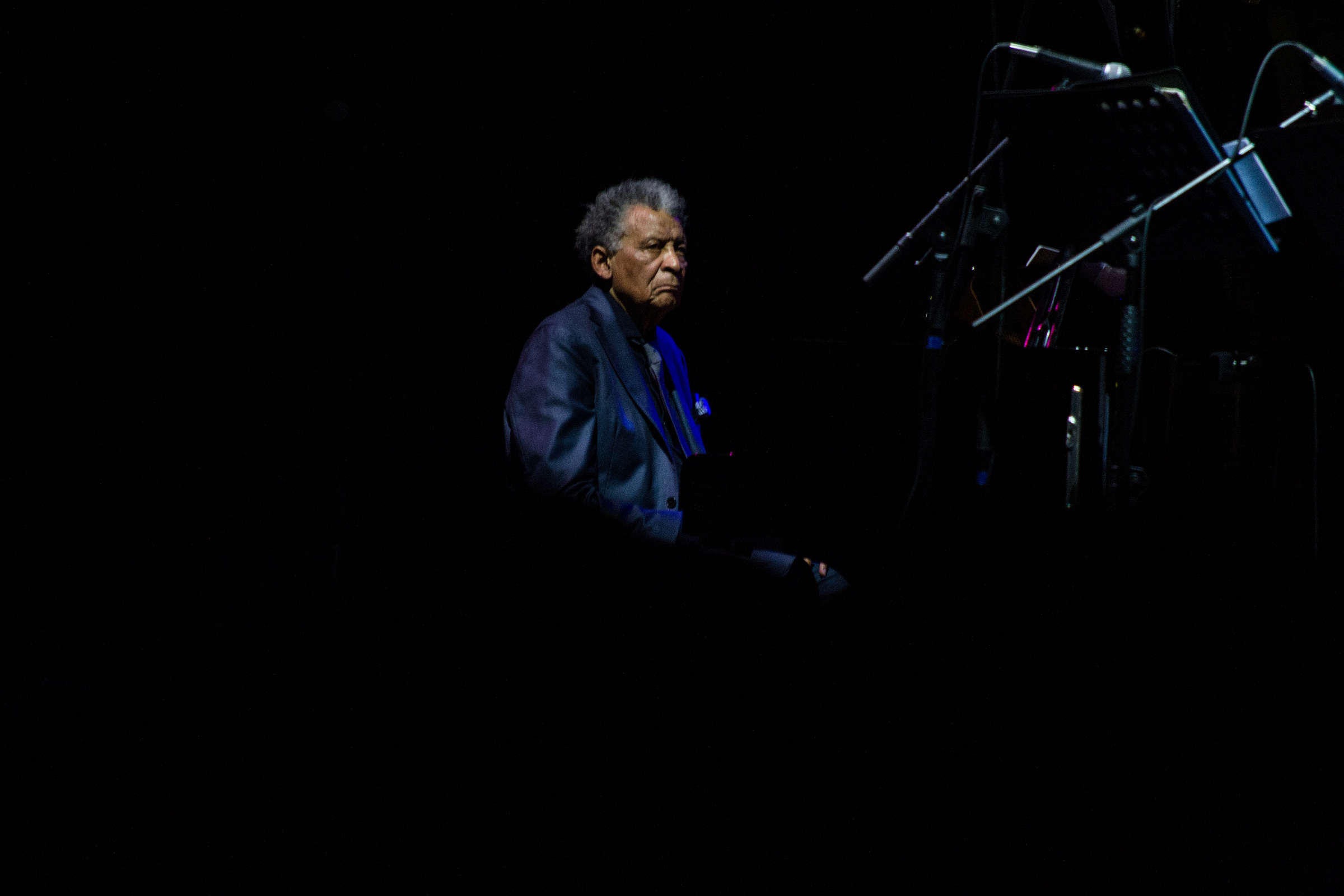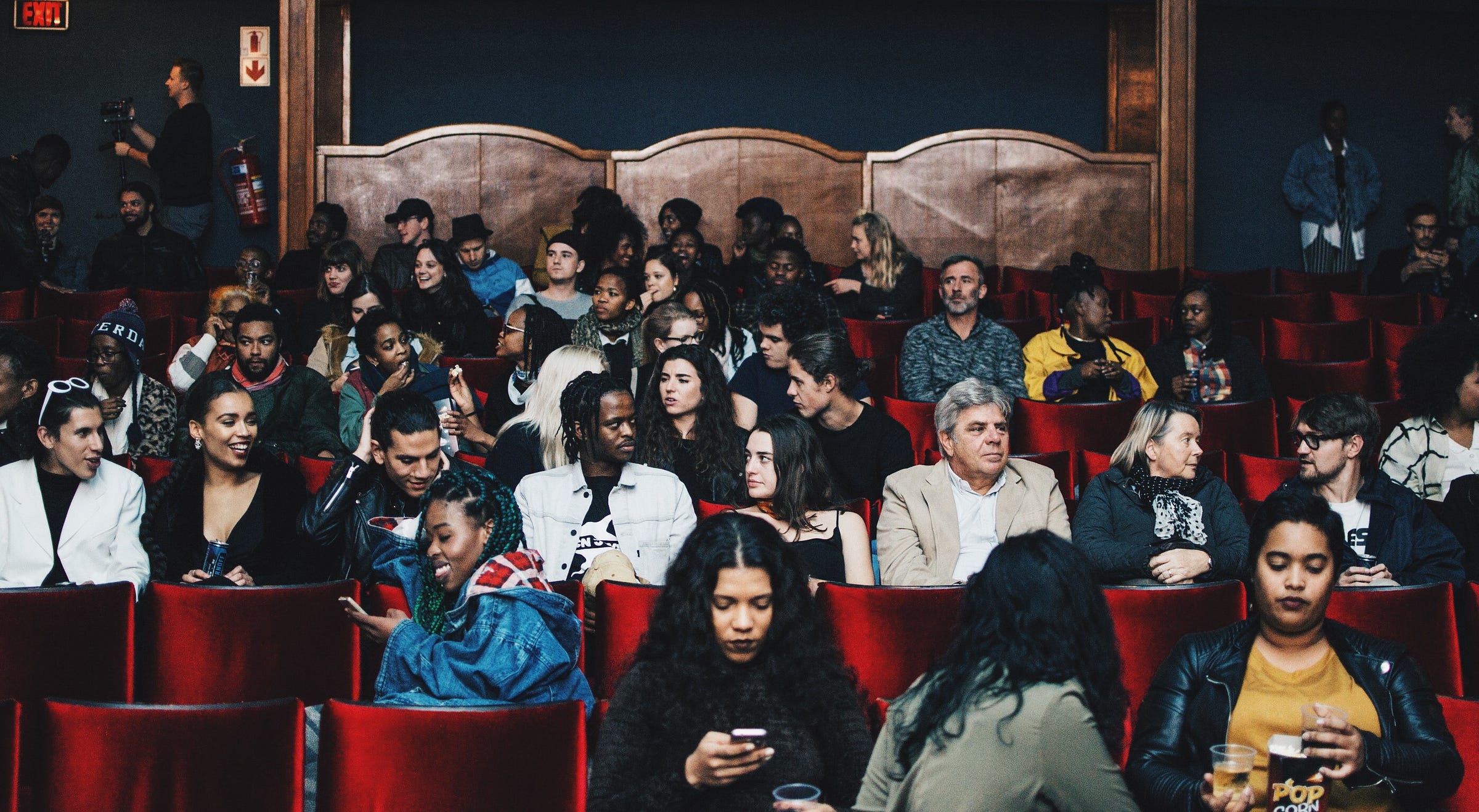The uniformed boys are inclined towards the camera in varying degrees—the rightmost boy holds his face in outline, the leftmost boy has turned so directly he squints. The severeness in their faces is hard to miss. A pen rests on the ledge, holding an undisturbed sheet of paper in place. Who among us has not known a teenager whose mood wavers like a flicker of naked fire?
Neo Baepi: “My main approach is to be as prepared as possible for any eventuality.”
The photograph was taken with a Nikon DSLR in Potchefstroom, North West Province, South Africa, at the unveiling of a family tombstone.
I was an altar server in my youth. It was good for me in terms of routine and being closer to my faith and spirituality — but it also challenged my ideas of religion. It was good to know that offering myself to the service was my choice, and leaving the service was no different.
I don't think I'm confident enough yet to have an approach to photography; I also don't think I'll ever have a distinguishable approach to my work. The work I have been doing so far is to make a living. I have not really had the opportunity to make work that is conceptual, and if I have, it's remained hidden in my archive. I think as I growi grow and become more secure, I'll develop some bravery to just try. Right now my main approach is to be as prepared as possible for any eventuality.
Even in its earliest forms, photography was intended to be an efficient visual medium. Paintings took too long, and moving pictures came much later. Taking a photo, as tedious as it was in the earlier times, was "easy." I also believe in it very deeply as a way to document moments in time and as a means to hold us all accountable to our development. For example, different peoples came to be photographed for different reasons — I think we owe it to ourselves to interrogate that.
The most recent example of an impactful moment that was photographed is the Marikana Massacre that happened in South Africa in 2012. The images of what happened to those black working class men at the hands of private interests colluding with the state have etched themselves in my memory, especially since I was formally trained as a photojournalist. Unfortunately, as far as accountability goes, the ”trade unionist” who ordered police to shoot down those miners is now the president of my country. The irony isn't even funny anymore.
Two other photographs by Neo Baepi
About Neo Baepi
Neo Baepi (they/them) is a South African photographer currently living and working in Johannesburg. Portraiture is the focus of their photography, allowing them to turn any space into the safest and most intimate. Having been exposed to various kinds of work, they can turn the corporate space, the music festival, the red carpet—anywhere, really—into a space that makes room for joy. Learn more about Neo’s work on their website and Instagram. Support their work here.
Last Week — moshood
My approach to photography is rather worshipful. Essentially: I obey the instinct that draws me to a scene or frame or idea, and I strive to regard what- or whomever I point my camera at, with reverence of some kind.
For one thing, I am struck by the photographic medium's peculiar power to orient and/or reorient how one perceives a place, a thing or phenomenon, a person or a people; for, I think, that point of orientation and/or reorientation is as generative as it is consequential to navigating several crucial facets of our lives.
Read More: Slow on Sundays
Support Tender Photo
This is the 41st edition of this publication. The newsletter can also read on web (best for viewing images), and via the Substack iOS/Android apps. Every week I feature one photograph and the photographer who took it: you’d read a short caption from me, and a statement from the photographer. My goal is to set up conversations with the work of early to mid-career African photographers. If this newsletter was shared with you, consider subscribing, and if you have already subscribed, please forward to a friend who loves photography.
I’ve introduced an additional method of engaging with the featured photographs. Each week I’d offer 3 short statements for you to choose from, whichever best captures the emotion or thought you had when you saw the featured work. I hope the “poll” serves as a collaborative and playful way to deepen your encounter with the photograph.








I am currently watching the TV series Handmaid's Tale. so the first photograph made me pull back in fear and so did the red chairs in the second photograph maybe because it felt like the crowd was waiting for something